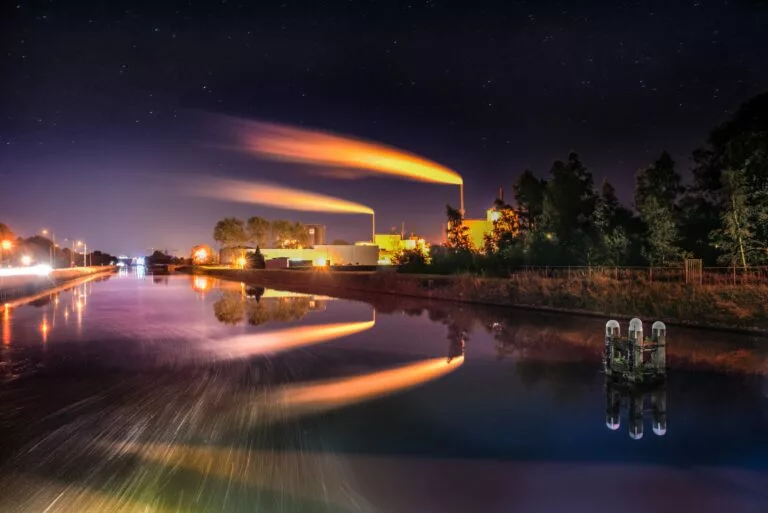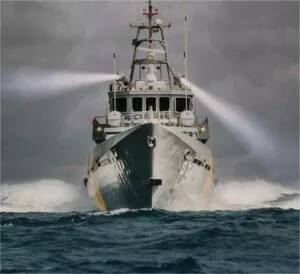Another name for a searchlight is a spotlight. A searchlight (or spotlight) is an apparatus that combines an extremely bright source (traditionally a carbon arc lamp) with a mirrored parabolic reflector to project a powerful beam of light of approximately parallel rays in a particular direction. It is usually constructed so that it can be swiveled about.


Other names for searchlight
Searchlight Common synonyms
Spotlight: This is the most common synonym for searchlight, especially in theatrical or entertainment contexts.
Floodlight: This term is used when the light source is more diffuse and broad, rather than a narrow beam.
Beacon: This refers to a searchlight that's used as a signal or guiding light, often stationary and mounted on a tower.
Searchlight Less common options
Light torch: This is a more old-fashioned term, especially for handheld searchlights.
Limelight: This refers to a brightly focused light used in theater or performance settings.
Searchbeam: This emphasizes the narrow, focused beam of the light.
Arc light: This term, although outdated, refers specifically to searchlights that use carbon arc lamps as the light source.
The development history of searchlight
A searchlight is a lamp that emits a powerful spotlight beam to illuminate a distant target. The history of the searchlight dates back to the mid-19th century, when carbon arc lamps were first used to produce a powerful beam of light.
In 1851, French inventor Claude Pouillet invented a searchlight that used a carbon arc lamp. The beam of this searchlight could reach a distance of 1 kilometre.
In 1879, American inventor Thomas Edison invented the incandescent lamp. Incandescent lamps are brighter and longer lasting than carbon arc lamps, so they quickly replaced carbon arc lamps as the light source for searchlights.
In the early 20th century, searchlights began to be used for military purposes. During World War I, searchlights were used to illuminate enemy targets and direct artillery fire.
During World War II, searchlight technology was further developed. Searchlights that used rotating lenses to focus the beam and searchlights that used electric motors to control the direction of the beam appeared.
After the war, searchlights began to be used in civilian applications. They were used to illuminate stadiums, concert venues and other large event venues.
Modern searchlights are more technologically advanced, using brighter, longer-lasting light sources and more precise control systems. They are used in a wide range of military, civilian and recreational applications.
Development stages of searchlights

Mid-19th century: the emergence of carbon arc lamp search lights
Early 20th century: the popularity of incandescent searchlights
World War I: military applications of searchlights
World War II: advances in searchlight technology
Post-war: civilian applications of searchlights
The development of searchlights has had a major impact on society. They were used in the military to illuminate enemy targets and guide artillery fire, and in civilian applications to light up large event venues, bringing convenience to people's lives.
TUBU
In today's market, LED flood lights have become a popular choice for outdoor lighting due to their energy efficiency, long lifespan, and versatility. However, with a wide range of products available, it can be challenging to determine which LED flood lights are of good quality. As a supplier of high-quality LED flood lights, TUBU is here to share some key factors to consider when evaluating the quality of LED flood
TUBU
In traditional agriculture, sunlight is the only source of light for plant growth. However, with the rise of modern agriculture and indoor growing, growers have discovered that different plants have vastly different light needs at different growth stages. Ordinary LED grow lights can only provide a fixed spectrum of light, making it difficult to meet the specific needs of high-value cash crops, rare flowers or medicinal plants. This is the
